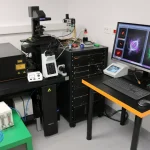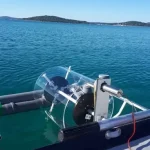Metal nanoparticles are submicron scale entities made of pure metals (e.g., gold, platinum, silver, titanium, zinc, cerium, iron, and thallium) or their compounds (e.g., oxides, hydroxides, sulfides, phosphates, fluorides, and chlorides), as explained by the Science Direct website.
When it comes to modern science, a particular interest in metals has now shifted to the Plasmonic effect. This effect is an interaction between free electrons in metal nanoparticles and incident light, as briefly explained by the National Institute of Technology Calicut physics department researcher Shamjid Palappra.
With this question raising curiosity among scientists worldwide, it was impossible for the Ruđer Bošković Institute (IRB) in Zagreb and their optics laboratory to not dive into the subject themselves.
As IRB reported, Matej Bubaš, Vesna Janicki, Stefano A. Mezzasalma, Maria Chiara Spadaro, Jordi Arbiol, and Jordi Sancho-Parramon authored a research titled ”Tailoring plasmonic resonances in Cu-Ag metal islands films” which was then published in a respected Applied Surface Science journal.
IRB’s optics lab collaborated on this research with colleagues from the Lund Institute of Advanced Neutron and X-ray Science (LINXS) in Sweden, and two institutions from Catalonia in Spain, the Catalan Institute of Nanoscience and Nanotechnology and ICREA.
”The plasmonic response of Cu-Ag metal islands films is being investigated. Films are obtained by the subsequent electron beam deposition of Ag and Cu using different fabrication conditions: the deposited mass thickness, then comes the substrate temperature, and then the post-deposition annealing in the vacuum. The optical properties of the films are investigated by spectroscopic ellipsometry and then correlated with the structural characterisation results obtained by electron microscopy,” explained the abstract of the research concerning the metal island combination of silver (Ag) and copper (Cu).
”Overall, it has been shown that Cu-Ag island films are compelling systems for plasmonic applications, as their optical response can be widely and easily tuned by adjusting the fabrication conditions,” the abstract summarised.
IRB’s press release clarified the research goals, stating that the scientists described how plasmonic properties could be adjusted for the preferred types of radiation, be it infrared, visible light, or ultraviolet radiation. These descriptions and setup possibilities of nanoisland plasmonic properties bring with them a plethora of applications.
”Devices that use plasmonic effects already upgraded their diagnostics and spectroscopy, while research in the direction of upgrading the conversion of solar energy and manufacturing catalysts that would turn toxic compounds into useful ones carry great potential for the development of new green technologies,” pointed out IRB’s press release.
Developing green technologies and turning toxic compounds into useful ones is not a new thing for IRB, as TCN previously reported.
Learn more about Croatian inventions and discoveries from Tesla to Rimac on our dedicated TC page.
For more about science in Croatia, follow TCN’s dedicated page.












